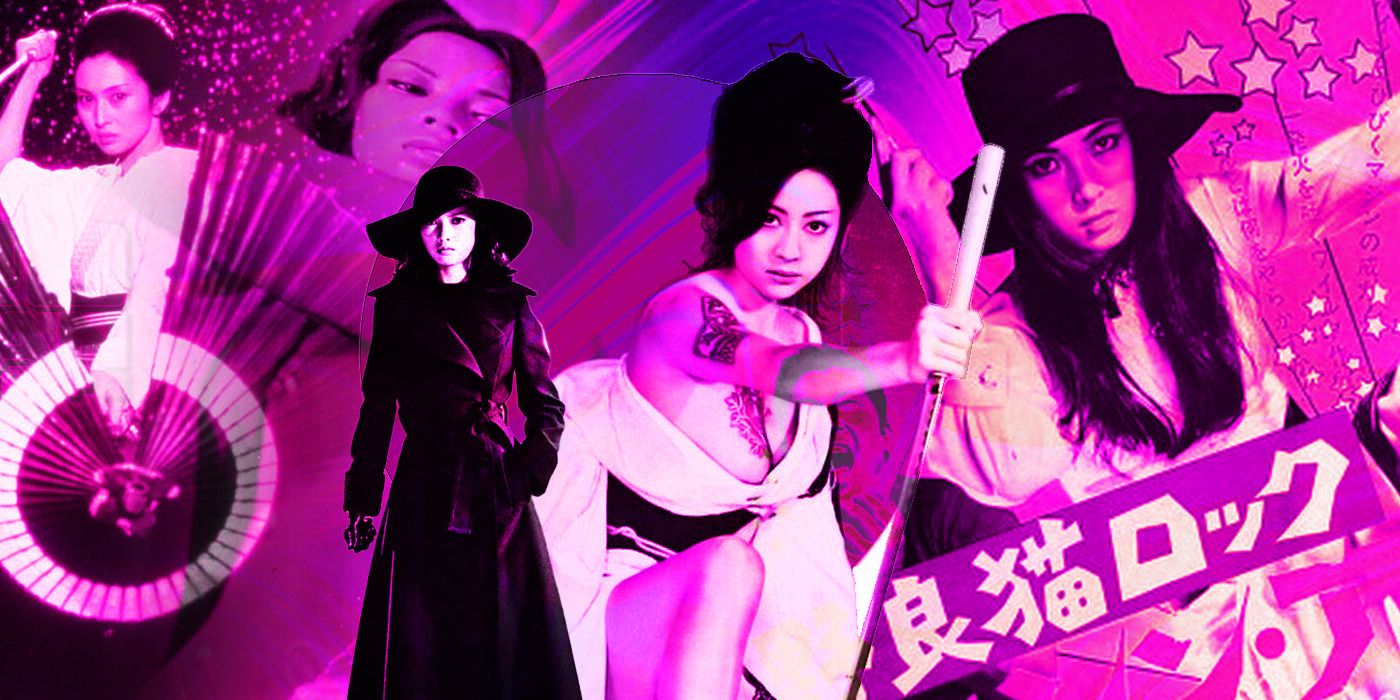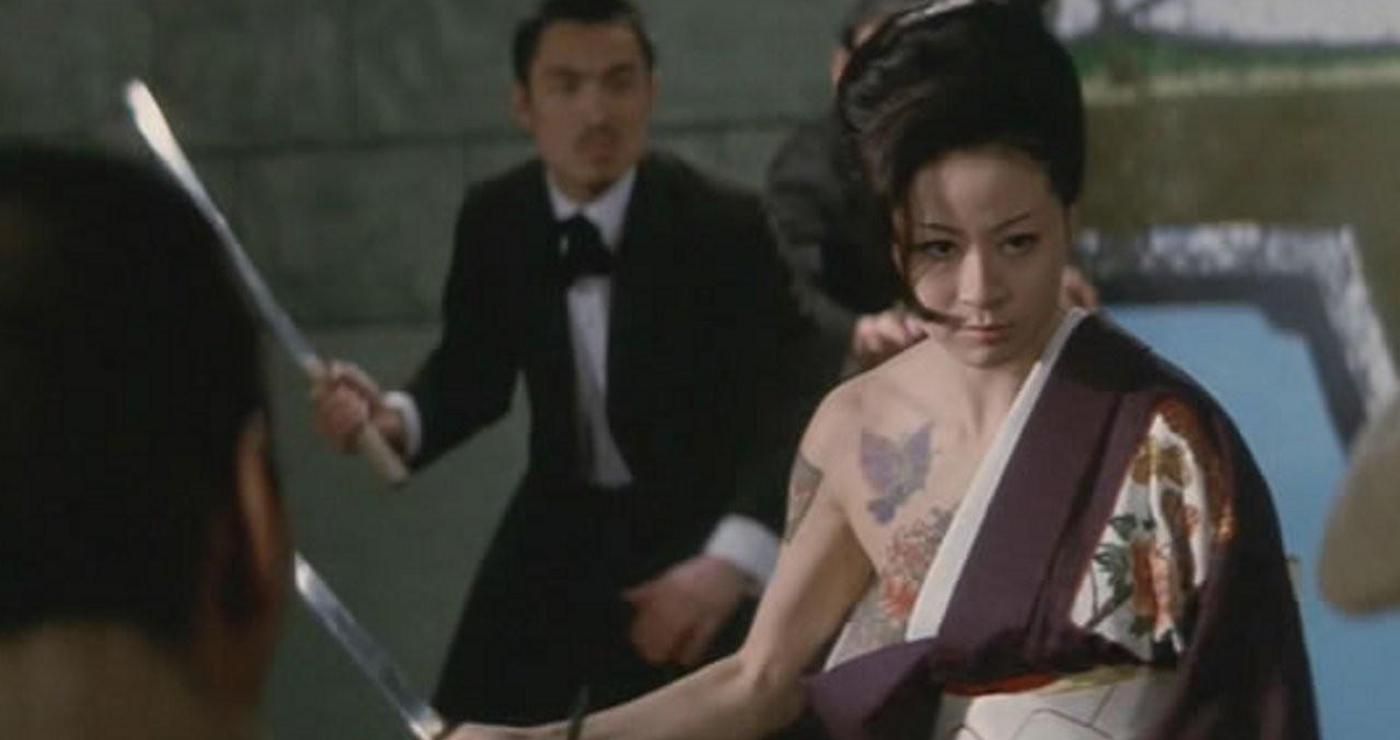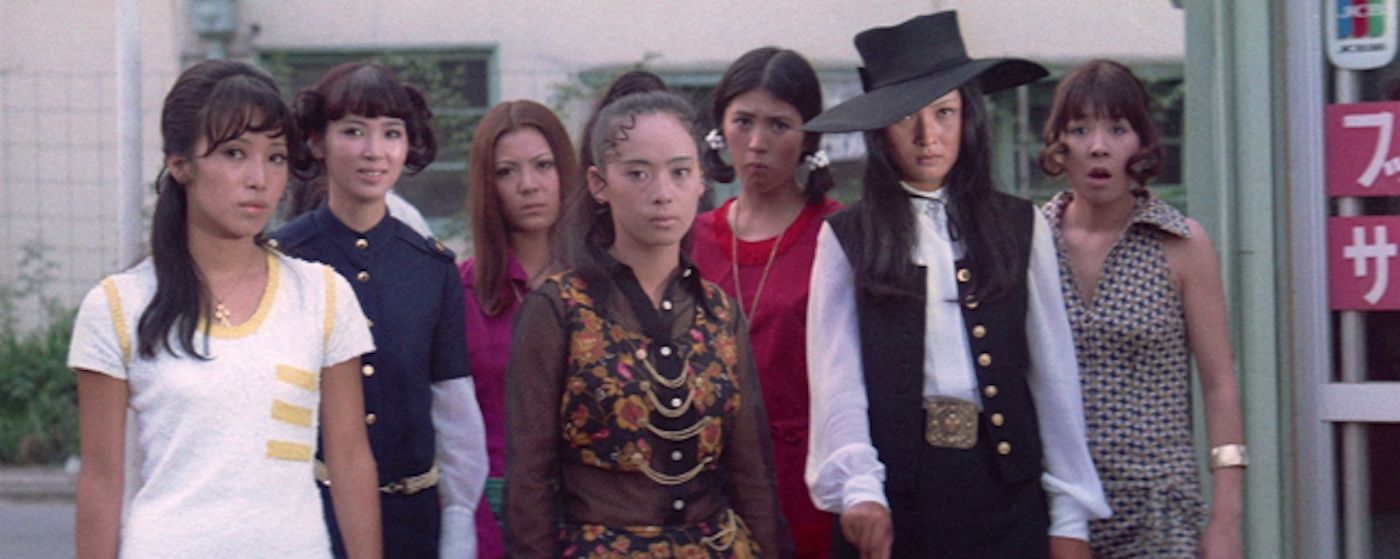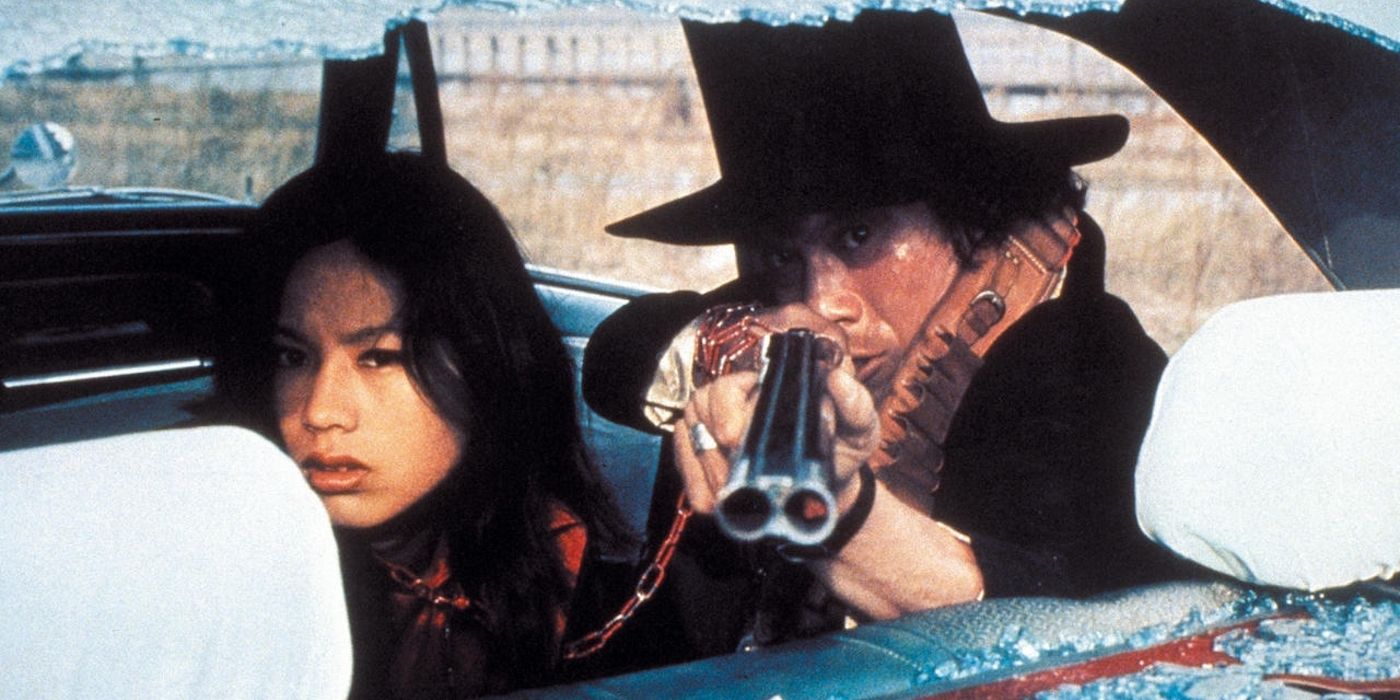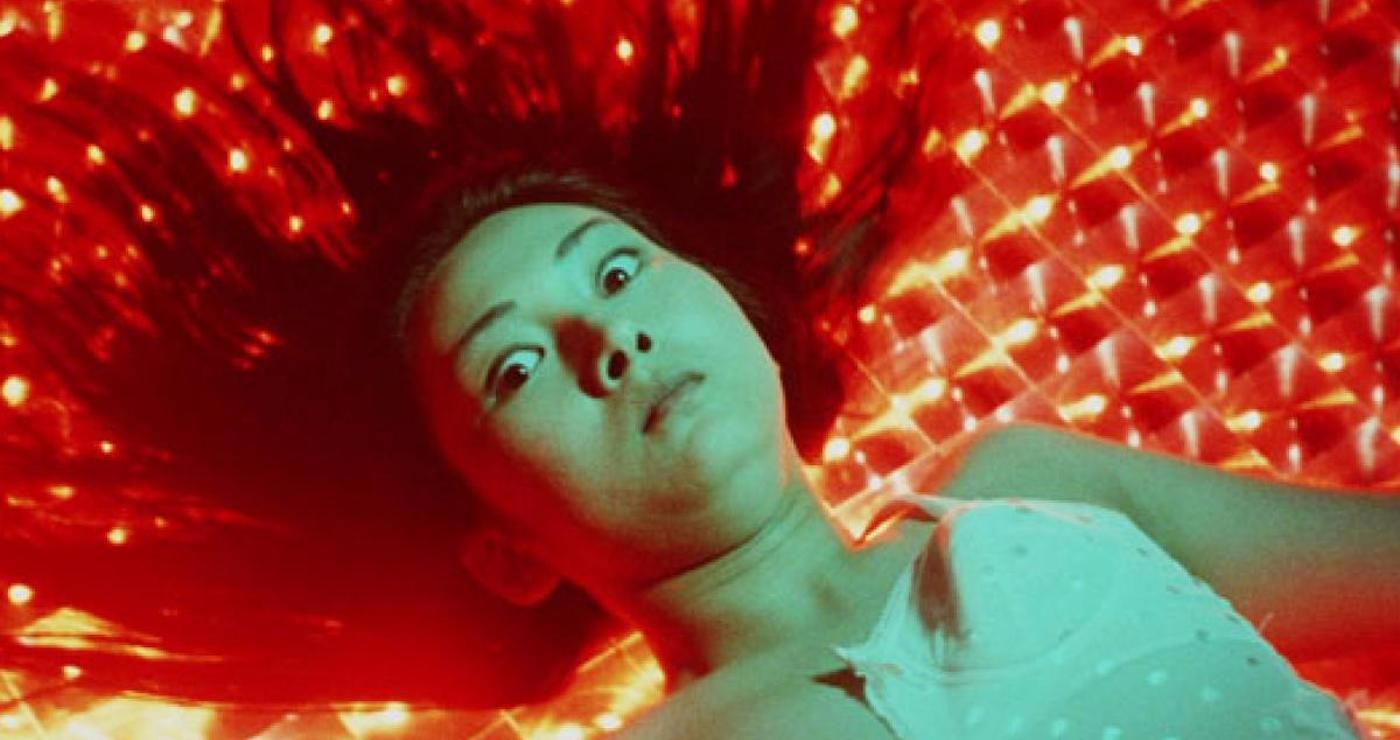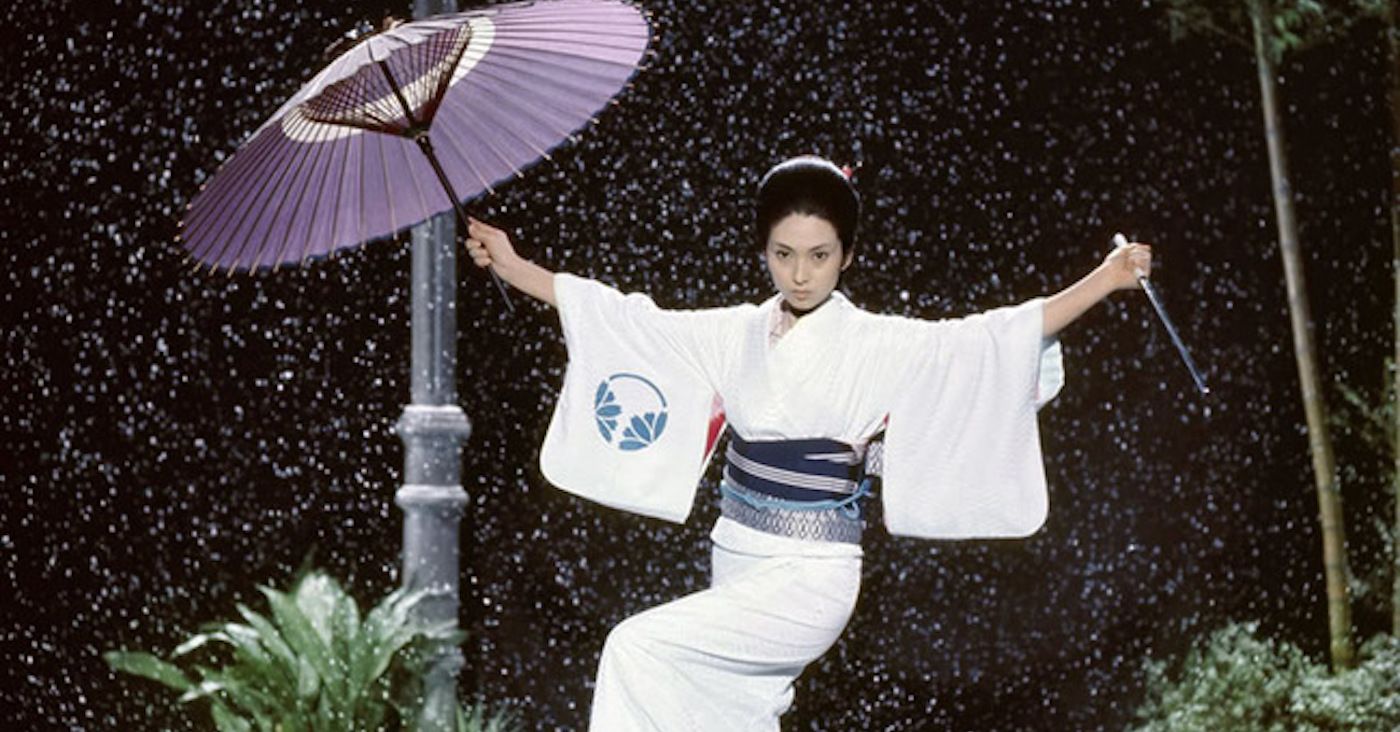You know the old expression: sex sells. But what sells even better than that? Sex and violence, of course. This was the conclusion, at least, of Japanese film company Toei in the 1970s, when they combined the two in a predictably gratuitous, but ultimately compelling (and indirectly progressive) way, launching a new subgenre that would come to be known in Japan as “pinky violence”.
What is pinky violence, exactly? To answer that, we’ll first need a little background. Pinky violence got its start during a lean time for the Japanese film industry: the late 1960s. Largely due to the increasing popularity of television -- and the influx of American films that had flooded post-war Japan – Toei found itself among those home-grown studios scrambling for fresh ideas. They didn’t have to look far: one native Japanese film genre that was prospering in the midst of this tumultuous period was the so-called pinku eiga or “pink film” – wildly popular movies that featured nudity and often skirted the line between pornography and more permissible fare. Toei introduced swords, guns, and youth culture (in a nod to popular American exploitation movies of the time) into this equation - sometimes keeping the nudity, but always keeping the blood. It proved to be a wildly successful innovation.
Pinky violence was thus born out of the pink film genre and proved to be equal to its progenitor in popularity. The success of the Toei films, in fact, inspired offerings from other studios, and throughout the 1970s, this riotous mix of sex and violence carved a profitable niche in the Japanese box office. Like most exploitation films, pinky violence movies were made to be disposable. Yet they’ve proven to not only have continued power but also a lasting influence -most recently with Quentin Tarantino’s Kill Bill, which borrowed heavily from the pinky violence canon. It’s worth asking; why? The simple reason, no doubt, stems from the fact that (most) of these movies remain anarchic fun: snappily edited, filled with great music, and infused with the rebellious transience of youth. That they are of their time and not made to last is, paradoxically, what makes them so exciting to revisit.
But from a social and cultural perspective, pinky violence films were not just of their time but ahead of it (particularly in Japan): while most storylines were simple riffs on threadbare exploitation narratives - rival gangs, juvenile delinquents, or revenge plots – what was different was that these stories were almost always female-focused, and starred female actors. Women, while often the victims of violence, were more likely to be the ones dishing it out. Whether avenging themselves against corrupt men or holding the reins of (small-time) power themselves; they gave as good as they got, and in the process, they changed film forever. They may be feminist landmarks, trash cinema, or both, but the short-lived pinky violence cycle continues to endure. Looking to discover some classics of the genre? See below for a short list of films to get you started.
A quick note before we dig in: pinky violence (much like film noir) is a slippery term, and few agree on what films qualify. The Toei films of the early 70s originated the genre, but as mentioned above, their influence was also wide-ranging. This list includes both Toei films and their offspring. It also leans heavily toward films that are widely available either on streaming or physical disc - sadly, many of the representative films of the genre have become difficult to track down.
Sex and Fury
Whatever disagreements fans may have about what constitutes a definitive pinky violence canon, nearly all agree that 1973’s Sex and Fury is among the best of the genre, or at least the most representative. Starring Reiko Ike as Ocho, a wise-cracking pickpocket, gambler, and (quite helpfully) expert swordswoman, Sex and Fury is pinky violence in a nutshell: Roughhewn, but with sporadic bursts of visual élan, it both objectifies and exalts its female lead in turns. Case in point: when Ocho is ambushed while bathing, she leaps from the tub with a sword in hand, slicing and dicing an army of assassins - entirely in the buff. Sex and Fury, indeed. Is it gratuitous? Absolutely. Over-the-top? You bet. And that’s what makes it the perfect introduction to the world of pinky violence.
The Stray Cat Rock Series
Released by venerable Japanese film studio Nikkatsu, The Stray Cat Rock series consists of five films that were churned out in nine months. With a release schedule like that, you might think that quality would vary considerably, and you’d be right. The films aren’t narratively connected - they’re tonal sequels that feature many of the same cast, and variations on the same shenanigans: mostly young female delinquents, ensconced in various levels of criminal activity, who find themselves butting up against more powerful factions – a dilemma typically resolved by a vicious shoot-out in the final act.
Led by the legendary Meiko Kaji, who appears in all five movies (despite being killed off in the first) the Stray Cat Rock films are frivolous fun, and a compelling peek into the Japanese youth culture of the early 70s (or at least how the producers imagined it): all groovy music, fast bikes, and hair triggers. What more needs to be said?
Zero Woman: Red Handcuffs
Along with Reiko Ike and Meiko Kaji, Miki Sugimoto forms the Mt. Rushmore of pinky violence. The three actresses appeared in most of the films (sometimes even co-starring, as Sugimoto and Ike did in the definitely-not-recommended Terrifying Girls’ High School series) and their work undoubtedly includes almost all the genre’s best entries. Zero Woman: Red Handcuffs is arguably Miki Sugimoto’s finest hour (and twenty-eight minutes). The movie stars Sugimoto as Rei, a former cop who is arrested and sent to prison for killing the man who murdered her close friend. But when a politician’s daughter is kidnapped, Rei is sprung from lock-up by the mysterious “Division Zero” to help. The rest is exactly what you’d expect: Rei (now “agent zero”) clobbering her foes in brutal fashion, assisted by a handy pair of red handcuffs.
The Female Prisoner Scorpion Series
Based on Tōru Shinohara’s Scorpion Manga, the Female Prisoner Scorpion series stars Meiko Kaji as Nami Matsushima (AKA Scorpion) a woman thrown into prison after seeking revenge against an abusive ex-boyfriend. From there, the action unfolds across four films, all involving Nami either attempting to survive in jail or on the run from the police. What, you wanted a plot? More than any other film on this list, the Female Prisoner Scorpion movies highlight the double-edged sword (pun intended) of pinky violence: women are unquestionably portrayed as powerful in these films, but that power almost always stems from trauma, and always takes the form of physical violence – a very male-centric view of what constitutes strength. Nevertheless, if you don’t take it too seriously, the series is definitely worth watching – mostly for the brilliance of Meiko Kaji, whose laconic, unblinking performance established her not just as the breakout star of 1970s Japanese action cinema, but as a force of nature.
Lady Snowblood
Speaking of Meiko Kaji, no list on pinky violence would be complete without her most famous role, 1973’s Lady Snowblood. Inspired by Kazuo Koike’s Manga of the same name, the film tells a simple revenge narrative in impeccable style, once again bolstered by an irresistible performance by Kaji as Yuki Kashima, the umbrella-wielding assassin out to get payback for the murder of her family. A heavy inspiration for Quentin Tarantino’s Kill Bill, Lady Snowblood will feel very familiar to fans of those films, with its crash zooms, vicious swordplay, and Bellagio fountains of bright red blood. But it’s also a must-watch on its own - arguably the best made (and most fun) of any movie inspired by the pinky violence genre.

